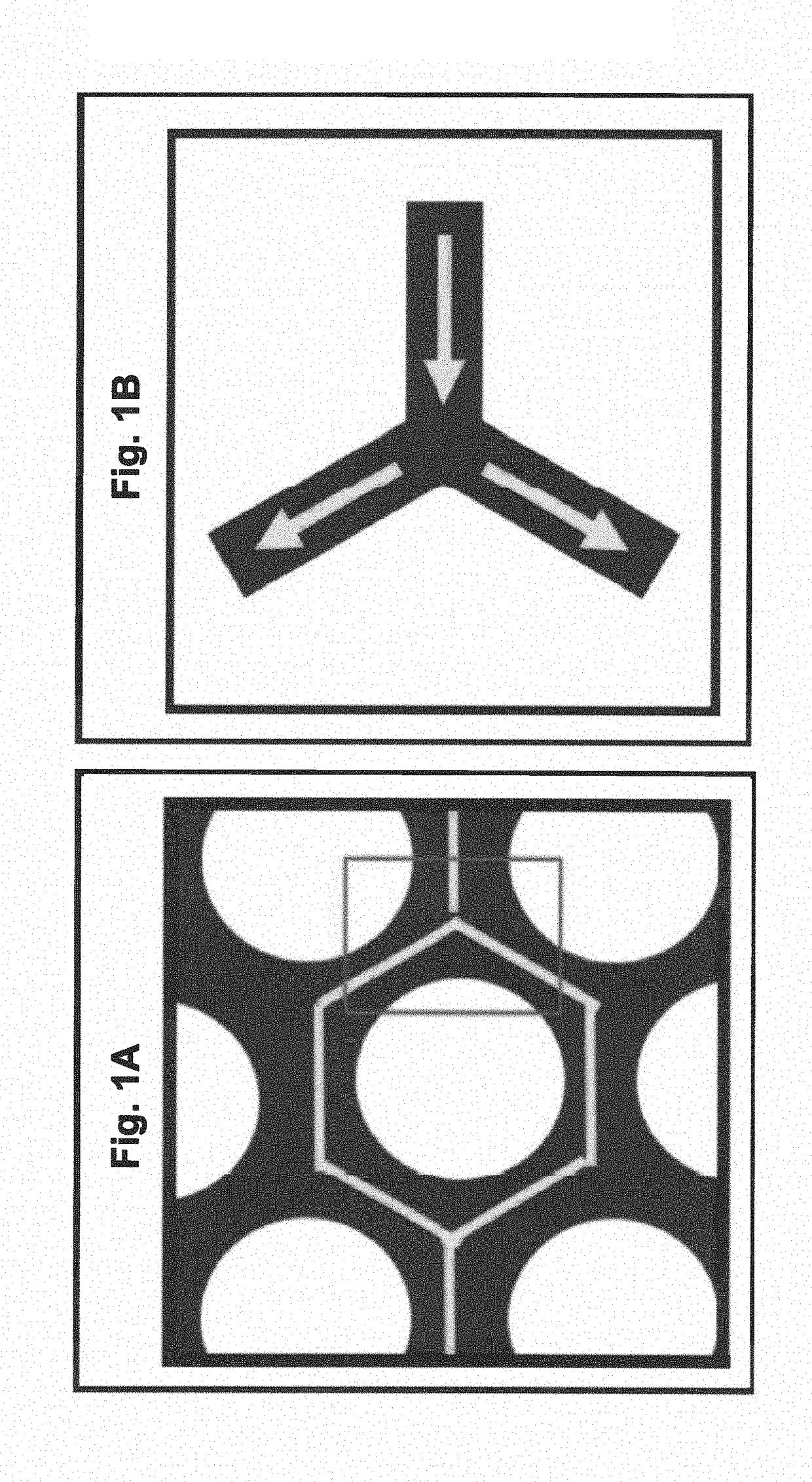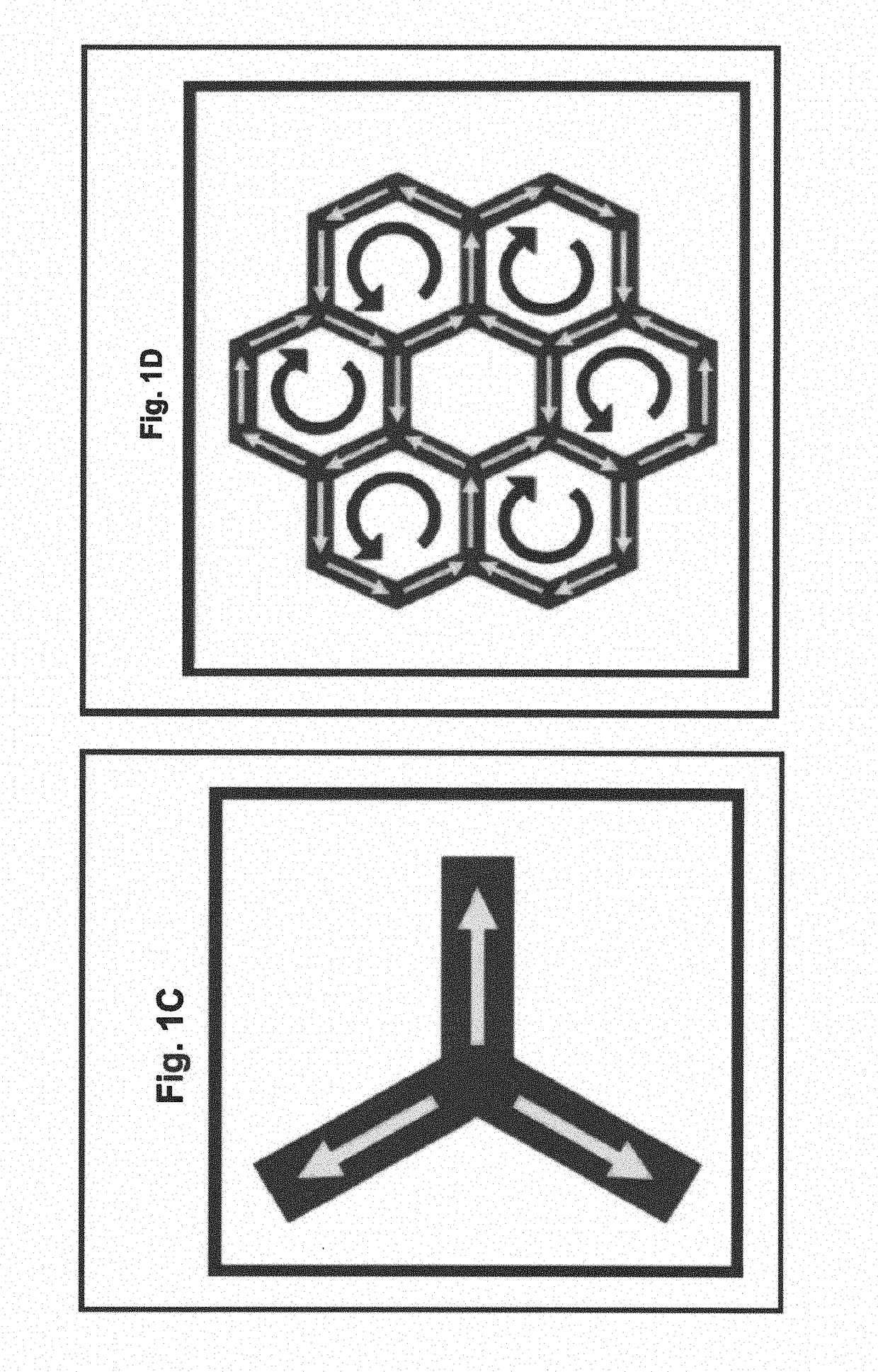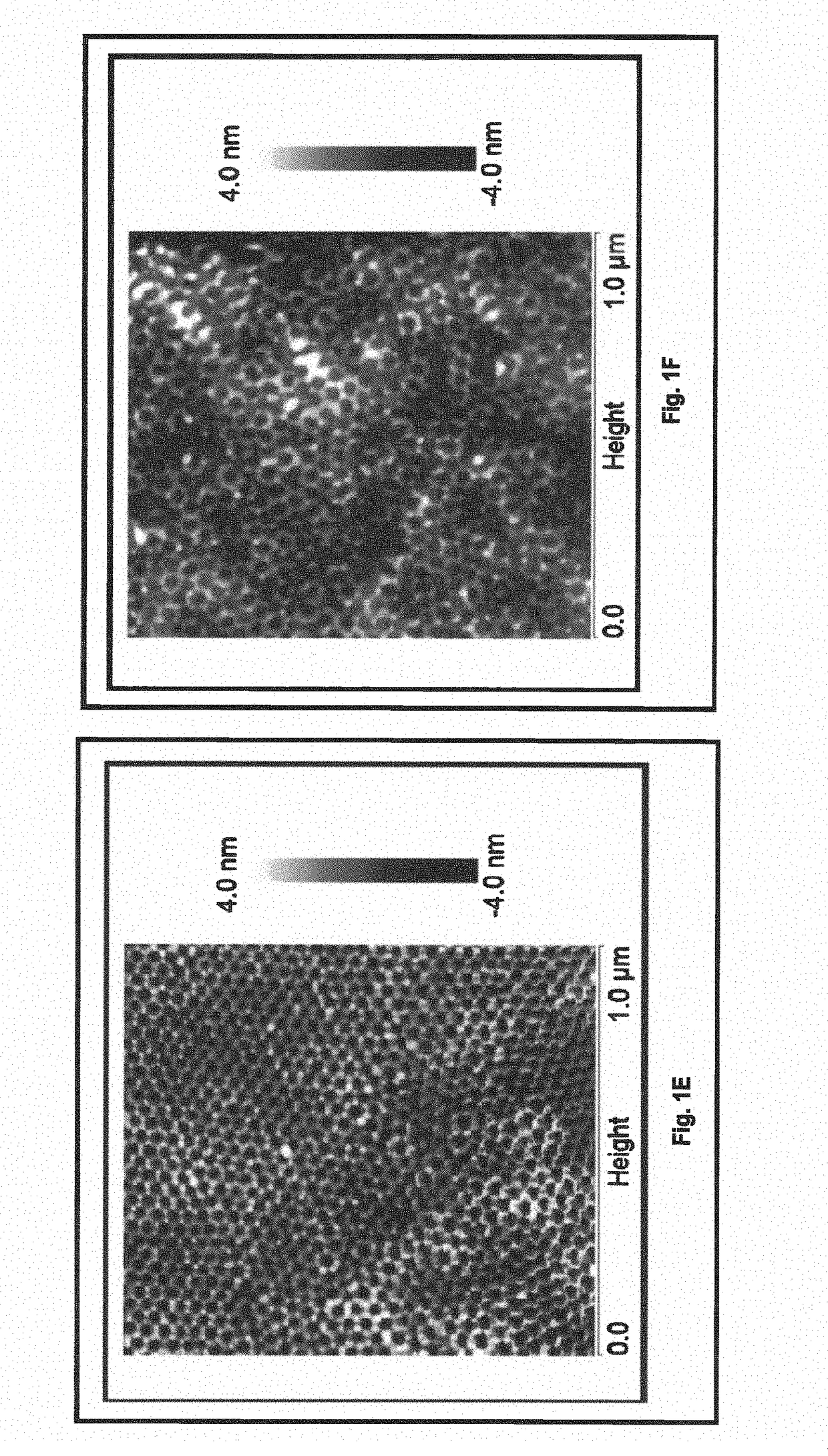Magnetic Diode in Artificial Magnetic Honeycomb Lattice
a magnetic diode and artificial honeycomb technology, applied in the field of macroscopy of magnetic artificial honeycomb lattices, can solve the problems of limited experimental efforts to realize the temperature-dependent magnetic correlations in the artificial honeycomb lattice, thermal fluctuations cannot induce spin flip or induce the development of a new phase, and the output power is reasonable small
- Summary
- Abstract
- Description
- Claims
- Application Information
AI Technical Summary
Benefits of technology
Problems solved by technology
Method used
Image
Examples
example 1
Sample Fabrication
[0087]The sample fabrication process utilized diblock copolymer polystyrene(PS)-b-poly-4-vinyl pyridine (P4VP) of molecular weight 23 k Dalton with the volume fraction of 70% PS and 30% P4VP. At this volume fraction, the diblock copolymer tends to self-assemble in a hexagonal cylindrical structure of P4VP in the matrix of polystyrene. A 0.5% PS-b-P4VP copolymer solution in toluene was placed in a heat bath at 60° C. for 1.5 hours and stored in a standard refrigerator. The solvent was spin coated onto cleaned silicon wafers at 2500 rpm for 30 s and placed in vacuum for 12 hours to dry. The samples were solvent annealed at 25° C. for 12 hours in a mixture of THE / toluene (80:20 v / v) environment. The process results in the self-assembly of P4VP cylinders in a hexagonal pattern within a PS matrix, as shown schematically in Step 1 of FIG. 2. Submerging the samples in ethanol for 20 minutes releases the P4VP cylinders yielding a porous hexagonal template as shown in Step ...
PUM
| Property | Measurement | Unit |
|---|---|---|
| surface area | aaaaa | aaaaa |
| width | aaaaa | aaaaa |
| average center-to-center distance | aaaaa | aaaaa |
Abstract
Description
Claims
Application Information
 Login to View More
Login to View More - R&D
- Intellectual Property
- Life Sciences
- Materials
- Tech Scout
- Unparalleled Data Quality
- Higher Quality Content
- 60% Fewer Hallucinations
Browse by: Latest US Patents, China's latest patents, Technical Efficacy Thesaurus, Application Domain, Technology Topic, Popular Technical Reports.
© 2025 PatSnap. All rights reserved.Legal|Privacy policy|Modern Slavery Act Transparency Statement|Sitemap|About US| Contact US: help@patsnap.com



